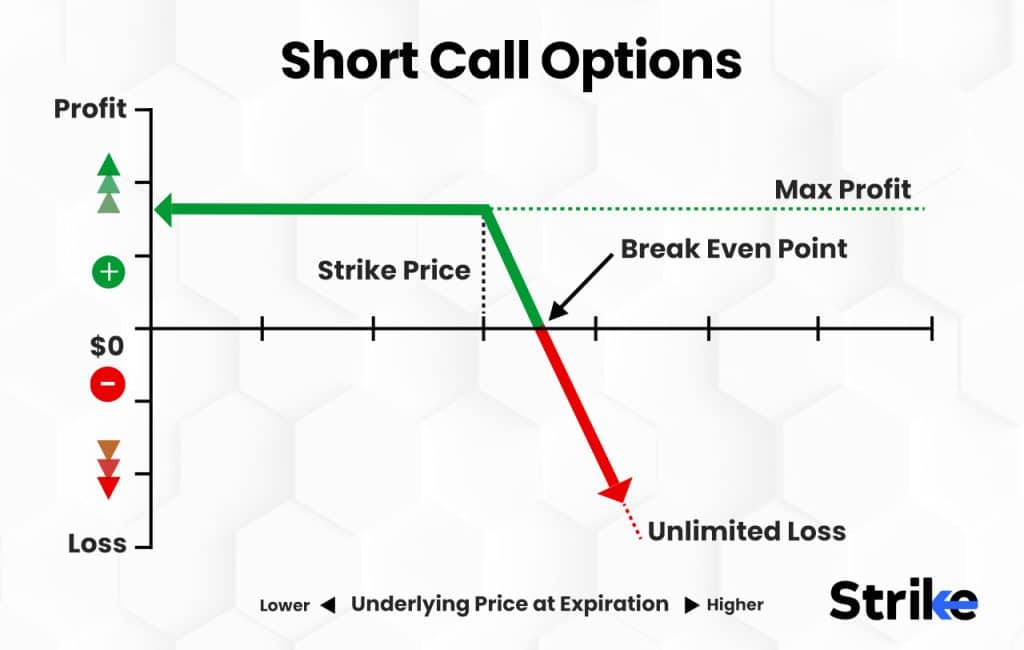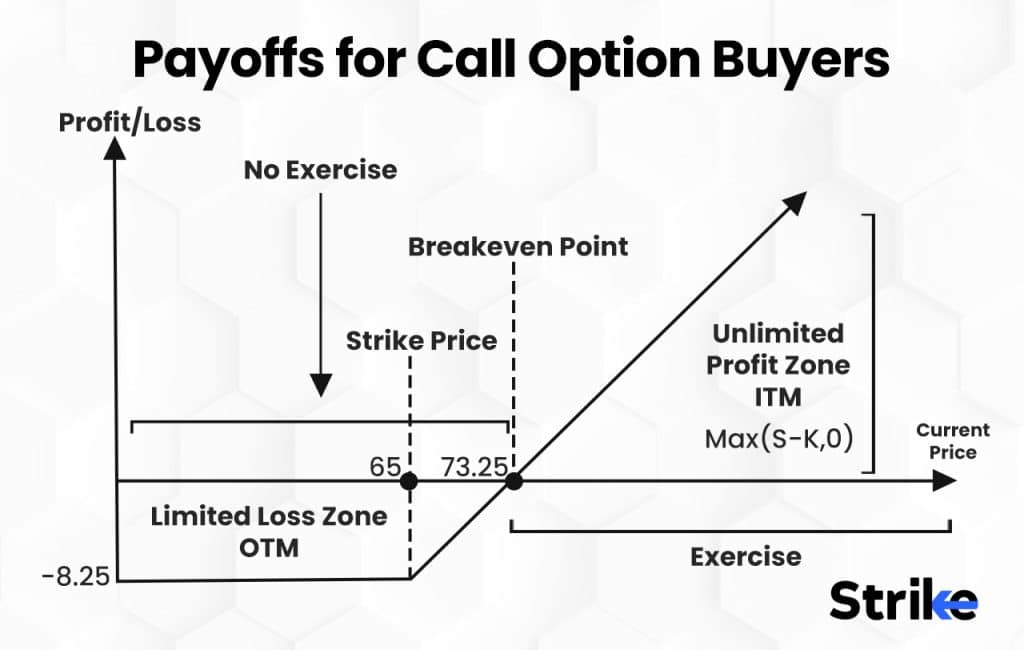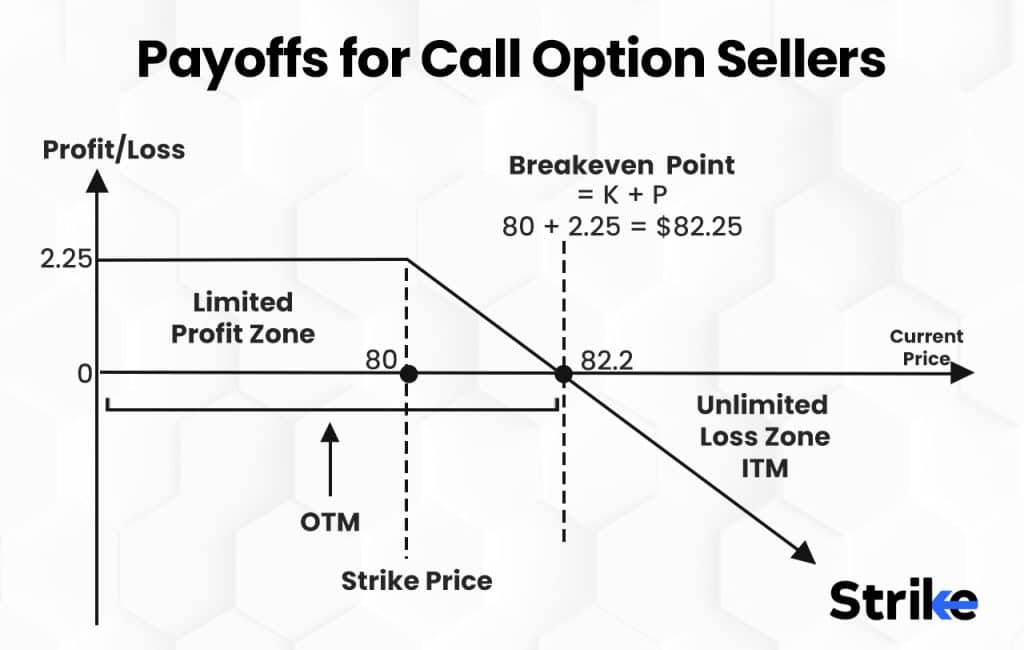
A call option is a financial contract that gives the buyer the right, but not the obligation, to buy an underlying asset at a predetermined price, known as the strike price, within a certain time period. Call options allow buyers to speculate on the price of the underlying asset or hedge against potential losses. The buyer pays a fee, known as a premium, for this right.
There are two main types of call options – American style and European style. American style call options are exercised at any time before the expiration date. European style call options are only be exercised on the expiration date. Call options are bought and sold on exchange traded markets or over-the-counter between two parties. They are commonly used for stocks but are written for other securities like bonds, commodities, currencies, and indices.
Some examples of how call options are used include speculating on a stock’s price, protecting against a decline in stock price, generating income by selling covered calls, and gaining exposure to an asset class. Investors buy calls when they expect the underlying asset’s price to rise.
The maximum loss is limited to the premium paid while the potential profit is unlimited. Selling covered calls generates income from the premium but means potentially selling the stock below market value if exercised. Overall, call options allow traders to implement strategies and manage risk.
What is a Call Option?
A call option is a contractual arrangement where two parties agree on the buyer’s right to purchase an agreed-upon quantity of a specific underlying asset from the seller, but without any compulsion to do so. In finance, a call option, is often simply labeled a “call”.This agreement remains in effect for a predetermined time frame and sets a fixed price at which this purchase occurs.
It is important to note that if the call buyer decides to exercise their right and buy the asset, the seller is legally obligated to complete the transaction. In essence, a call option allows buyers to speculate on future movements in asset prices or protect against potential portfolio losses without initially owning said assets.
A call option buyer pays an upfront premium to the seller for the rights granted by the call option contract. This premium paid by the buyer is nonrefundable, meaning the seller keeps this amount no matter if the option is exercised or not. In return for this premium payment, the call option buyer gains upside exposure to the underlying asset while limiting the downside risk to only the premium paid. Hence, the payoff for the call option buyer is asymmetric.
The predetermined price specified in the call option contract is known as the strike price or exercise price. The market price of the underlying asset rises above the strike price before expiration, which means the buyer exercises the option, pays the strike price to the seller, and receives the higher valued asset. Their profit is the current market price minus the strike price minus the premium paid. Alternatively, the price stays below the agreed strike price means the call option expires worthless and the buyer only loses the premium paid.
Call options are purchased on a wide variety of securities including stocks, bonds, commodities, currencies, market indexes, and futures contracts. The time period within which the buyer exercises their right to buy varies based on option style. American-style options permit exercise at any point up until expiration while European-style options is only exercised at the expiration date.
There are two main reasons investors and traders use call options: speculation and hedging. Speculation involves betting on the upside price movements of the underlying asset. The limited downside risk makes call options appealing for speculators who wish to profit if their bullish view pans out while being protected if prices fall. Hedging involves protecting against potential losses in an existing portfolio if the market declines. The asymmetric payoff of call options serves as portfolio insurance
On the other side of the contract, the seller of a call option is obligated to sell the underlying asset at the strike price if assigned by the buyer. Hence, the call option seller’s payoff profile exhibits unlimited downside exposure if the price rises above the strike but limited upside capped at the premium received. Sellers collect the premium upfront but take on higher risks later on.
How Does Call Option Work?
The call option works by giving the right that is purchased by the buyer paying an upfront premium to the seller. The seller, after receiving this premium payment, is then obligated to sell the underlying asset at the strike price, with this obligation coming into play if the call option is exercised. The mechanics of how call options work is broken down into the following key components – the premium payment, strike selection, expiration date, exercising the option, assignment, and settlement.
The first step involves the call option buyer who must pay a non-refundable premium to the seller to initiate the contract. This premium payment is made upfront at the time the call option is first purchased. The seller is compensated for the potential obligation to sell the underlying asset later on at the agreed strike price by the premium. The premium amount is determined by factors like the moneyness of the strike price, time to expiration, and implied volatility.
The second step is the selection of the strike price, also known as the exercise price. The fixed price at which the call option buyer can purchase the underlying asset from the seller is the strike price. Strike prices are typically set at, above, or below the current market price. In-the-money calls have lower strike prices while out-of-the-money calls have higher strike prices.
The third component is the expiration date which sets the timeframe during which the call option is exercised. American-style options permit exercise at any point before expiration while European-style options can only be exercised on the expiration date itself. Longer dated options have more time value priced into the premium.
The call option buyer initiates a process of exercising the option and assignment of the seller by informing their brokerage firm that they have decided to exercise their right to buy. The seller selected to fulfill the obligation is randomly chosen if the call is exchange-traded or predetermined for over-the-counter call options.
In the settlement process, the call buyer pays the strike price to the assigned seller andin return, receives the underlying asset as specified in the contract. For stock options, physical delivery usually does not take place. Instead, the difference between the market price and strike price is exchanged in a process called cash settlement.
The payoff for both the call buyer and seller will be determined by the status of the option at expiration – whether it’s in-the-money, at-the-money, or out-of-the-money. The call option will be exercised and the buyer will profit from the difference minus the premium paid, but only in the situation where the market price is above the strike at expiration. The seller is obligated to sell at the lower strike price, incurring a loss.
On the contrary, there is no point in exercising the out-of-the-money call when the price is below the strike at expiration. It expires worthless and the buyer loses only their initial premium paid. Meanwhile, the seller gets to keep the whole premium amount as their profit. The call option breaks even with no profit or loss in the scenario where the market price equals the strike at expiration.
What are the Types of Call Options?
There are two main categories of call options: Long Call Options and Short Call Options. Below are more details about both.
1. Long Call Options
A Long Call Option refers to a situation where a trader or investor purchases a call option with the expectation that the price of the underlying asset will rise in the future. Essentially, going long on calls is viewed as a bullish strategy. The buyer agrees to pay the option seller a premium which grants them the right to buy the specified asset at an agreed-upon price (known as the ‘strike price’) within a given time frame called the expiration date.

The advantage of utilizing long call options lies in their potential for unlimited profits if the value of the underlying asset skyrockets. However, there is limited risk involved due to being only liable for paying the premium. Consequently, by investing relatively modest funds upfront, traders gain control over larger positions in assets.
To understand it better, think of long call options like prepaying for shopping coupons that enable you to purchase items at lower prices later on. Those item prices increase subsequentlyand, you still get to acquire them at cheaper rates and make profits accordingly; however, if prices don’t rise or fall instead, your only loss would be equivalent to what you originally paid for those coupons.
2. Short Call Options
Short Call Options occur when an investor sells or writes a call option contract. This choice typically aligns with bearish strategies because sellers anticipate declines or stagnation regarding an asset’s market value. During this process, buyers pay premiums to sellers who become obligated to sell said assets at previously agreed-upon strike prices if buyers choose to exercise their options.

Potential earnings from short-call options are capped based on received premiums during sale initiation; losses could potentially be substantial concurrently should underlying-assets’ values skyrocket unexpectedly – ultimately triggering unwarranted sell-offs way below expected strike points and therefore yielding unlimited theoretical losses for sellers.
Analogously, short-call options resemble selling insurance policies. In this case, you collect an upfront premium from policyholders but face potentially significant expenses if certain events take place (in this scenario, such events involve asset prices dramatically increasing).
Both long and short call options possess their distinct risk-reward profiles. Long call options appear enticing because of the possibility of achieving endless profits whilst keeping risks relatively contained. Nevertheless, odds are against making substantial profits due to the necessity for underlying assets’ prices to surge significantly in order to counterbalance correspondingly paid premiums adequately.
Short-call options hold considerably high probabilities for profiting since earning maximum gains is contingent upon assets’ values remaining flat or declining. However, those who opt for these option types expose themselves to potentially limitless losses caused by unexpected spikes in asset valuations.
How is the Payoffs for Call Option Buyers?
The payoff for a call option buyer is if the price of the underlying asset is above the strike price at expiration, the option is “in the money” and has intrinsic value. The payoff is the difference between the market price and the strike price. For example, consider the strike price is Rs.50 and the market price is Rs.60, the payoff is Rs.60 – Rs.50 = Rs.10. The option is “at the money” and has no intrinsic value if the price of the underlying is equal to the strike price at expiration.

The payoff is zero. The option is “out of the money” and expires worthless If the price is below the strike price. The payoff is zero. So the potential payoff for a call buyer is unlimited, as the market price can rise without limit. However, the maximum loss is limited to the premium paid for the option. The higher the market price rises above the strike price, the greater the payoff for the call buyer. But if the price stays below the strike, the call buyer loses the premium paid.
How is the Payoffs for Call Option Sellers?
The payoff for a call option seller is if the price of the underlying is above the strike price at expiration, the seller has to sell the asset below market value. Their loss is the difference between the market price and the strike price. For example, consider the strike is Rs.50 and the market price is Rs.60, the payoff is -Rs.10. The price equals the strike price means the option expires worthless and the seller gets to keep the premium received when selling the option.

The payoff is the premium amount. The price is below the strike at expiration means the option expires worthless. The seller again keeps the full premium. The payoff is the premium amount. So the potential loss for a call seller is unlimited, as the market price rise indefinitely. Meanwhile, the maximum gain is limited to the premium received from selling the option.
How to Calculate Payoffs Call Option?
There are two main steps to calculating the payoff of a call option at expiration.
1. Calculate the difference between the underlying asset’s price and the strike price
2. Determine if this difference is positive or negative to see if the option is in the money, out of the money, or at the money
The payoff for the call option holder is
Max(0, Underlying Price – Strike Price)
So the payoff depends on the relationship between the asset price and the strike price at expiration
– The asset price is above the strike price means the option is in the money. The payoff is the asset price minus the strike price.
– The asset price equals the strike price means the option is at the money. The payoff is zero.
– The asset price is below the strike price means the option is out of the money and expires worthless. The payoff is zero.
The maximum loss for the call buyer is limited to the premium paid. The maximum profit is unlimited as the underlying asset price can rise without limit.
For example
– Stock XYZ is trading at Rs.50
– 1 call option contract with strike price Rs.45 expires today
– Premium paid was Rs.2 per share
If XYZ stock price = Rs.55 at expiration
– Asset price Rs.55
– Strike price Rs.45
– Payoff = Max(0, Rs.55 – Rs.45) = Rs.10
If XYZ stock price = Rs.45 at expiration
– Asset price Rs.45
– Strike price Rs.45
– Payoff = Max(0, Rs.45 – Rs.45) = Rs.0
If XYZ stock price = Rs.40 at expiration
– Asset price Rs.40
– Strike price Rs.45
– Payoff = Max(0, Rs.40 – Rs.45) = Rs.0
The call buyer’s payoff table would be
XYZ Stock Price Payoff
Rs.0 – Rs.45 Rs.0
Rs.45 Rs.0
Rs.46 Rs.1
Rs.47 Rs.2
Rs.48 Rs.3
Rs.55 Rs.10
Following these steps allows you to easily determine the profit or loss for a call option buyer at expiration for any asset price scenario. The key is understanding the asymmetric payoff profile.
What are the Uses of Call Options?
There are three primary uses for call options. Below are more details.
1. Income Generation
Call options is used to generate income in a four main ways.
Selling Covered Calls
You are able to sell call options on that stock to collect the premium as income. This gives the buyer the right to buy your stock at the strike price. Your stock may get called away if the share price rises above the strike at expiration.
Naked Call Writing
You are able to sell call options without owning the underlying stock. This is riskier as you face unlimited loss potential if the stock rises. The premium collected is the maximum gain.
Cash-Secured Puts
Selling cash-secured puts is similar to covered call writing. You put up cash collateral equal to the option strike price. The put expires in the money means you get assigned the stock at the strike price. The premium collected reduces your cost basis.
Call Option Spreads
Option spreads like bull call spreads cap the risk of naked call writing while allowing you to profit from a moderate rise in the stock. You sell a call option, and buy a higher strike call to limit risk. The net premium received provides income.
The main benefit of call writing income strategies is you get paid an upfront premium for taking on the obligation to sell/buy the stock in the future at the strike price. The premium collected provides income. The risk is having to sell/buy the stock at an unfavorable price if the market moves against you.
2. Speculation
Call options allow you to speculate on a stock’s price increasing with limited downside risk.
Buying Call Options
You pay a small premium to control 100 shares of the underlying stock, while risking only the premium paid if the stock fails to rise. The upside profit potential is unlimited if the stock rises.
Leverage
Options provide leverage since you pay a smaller premium versus buying the stock outright. Higher leverage magnifies percentage gains/losses.
Higher Risk/Reward
While risky if the stock drops, call buyers achieve much higher percentage returns than owning the stock. The break-even point is the strike price plus premium paid.
Low Capital Required
Options allow taking a speculative position in a stock by paying a small premium versus buying the full value of the shares. This provides exposure with less capital.
Speculating with call options offers advantages over buying stock since the risk is limited to the premium paid, but the upside profit potential is uncapped if the stock rises sharply. The leverage involved provides greater percentage returns.
3. Tax Management
There are four tax advantages associated with certain call option strategies.
Covered Call Writing
Income from covered call writing is taxed at lower long-term capital gains rates if you hold the stock over one year. Stock ownership also qualifies for preferential tax treatment.
Tax Deferral
You don’t realize gains/losses until closing the option position. Options allow deferring taxes until you choose to recognize the gains/losses.
Capital Losses
Any capital losses incurred from options trading are used to offset capital gains from other investments to lower your overall tax liability.
Wash Sale Rule Avoidance
Selling options allows staying invested while avoiding the wash sale rule, which disallows recognizing capital losses if you buy a stock within 30 days of selling at a loss.
Tax Reporting
Option trades must be reported on tax returns, the IRS does not require detailed transaction-by-transaction reporting like for stocks. Only totals are reported for options trades.
Understanding these main motives for trading calls allows crafting an options strategy aligned with your financial objectives, risk tolerance, and tax considerations. The flexible risk-reward profiles and preferential tax treatment make call options useful tools for generating income, speculating on stocks, and managing taxes.
What are Examples of Call Options?
A call option gives the holder the right, but not obligation, to buy the underlying asset at a predetermined price on or before a specified expiration date. Here are some common examples of using call options.
Nifty Call Options
Nifty call options allow buying the right to purchase the Nifty 50 index at the strike price before expiration. For example:
Nifty current price: 18,000
Buy 1 lot Nifty 18,100 call option
Expiry in 1 month
Premium paid: Rs 150 per share
Upon expiry, the call option is exercised to buy Nifty at 18,100 if Nifty rises above 18,100. Profit is made on the difference between 18,100 and the market price. The call option expires worthless if Nifty stays below 18,100.
Stock Call Options
Call options are available on individual stocks like Reliance, HDFC Bank, Infosys etc. For example:
Reliance current price: Rs 2,500
Buy Reliance 2,600 call option
Expiry in 2 months
Premium paid: Rs 50 per share
Profit is realized by buying the shares at Rs 2,600 and immediately selling at the higher market price if Reliance trades above Rs 2,600 upon expiry. The maximum loss is limited to the Rs 50 premium paid if the option expires out of the money.
Gold Call Options
Gold call options give the right to buy gold futures contracts at the strike price before expiration. For example:
Gold price: Rs 50,000 per 10 grams
Buy gold 50,500 call option
Expiry in 3 months
Premium paid: Rs 200 per 10 grams
The call option holder will be able to exercise to profit from the difference if gold futures rise above 50,500. The premium paid caps the maximum loss if gold stays below 50,500.
Index Futures Call Options
Call options are available on index futures like Bank Nifty and Nifty IT futures. For example:
Bank Nifty futures: 39,500
Buy Bank Nifty 40,000 call
Expiry in 1 week
Premium paid: Rs 300 per lot
The call buyer will be able to exercise the right to buy at 40,000 and immediately sell the futures at the higher market price to pocket the difference if Bank Nifty futures expire above 40,000. Else the premium paid is lost.
Covered Call Writing
Holders of Reliance shares write covered calls by selling out of the money call options to earn premium income. For example:
Own Reliance shares at Rs 2,400
Sell Reliance 2,600 call option for Rs 30 premium
Expiry in 3 weeks
The call option expires worthless and the premium is kept if Reliance stays below Rs 2,600. The shares get called away or are sold at Rs 2,600 if Reliance rises above 2,600. The premium reduces this sale price.
These demonstrate the wide applicability of call options for speculating, hedging, and income generation across equities, indexes, commodities, and futures in the Indian derivatives market.
Why Would Investors Buy Call Options?
Buying call options is an attractive strategy for investors for several key reasons. First, call options provide a way to speculate on stocks rising in price while capping the downside risk to just the premium paid. The leverage involved allows outsized percentage gains if the stock rises above the strike price. Additionally, call options clearly define the maximum risk, unlike owning stock which has unlimited loss potential.
Investors are also drawn to calls since they require less capital to control the same quantity of shares versus buying the stock outright. Call options serve as an effective hedge against losses in stock ownership. They also provide a means to gain future access to buying stocks at a specified price, even if the investor currently lacks sufficient capital.
Finally, the tax advantages of deferring capital gains until exercising the options are favorable compared to owning stock directly. In summary, the defined and limited risk, leverage, lower capital requirements, hedging ability, and tax benefits make buying call options advantageous for many investing strategies.
What are the Advantages of Call Options?
Below is an overview of the nine key advantages of trading call options.
Limited Downside Risk
Unlike owning the underlying asset directly, the maximum loss on a call option is limited to the premium paid to buy the option contract. The call option is simply allowed to expire worthless even if the underlying stock or asset falls to zero. The defined and capped risk makes losses predictable.
Leverage
Options provide leverage since the upfront capital required is lower than owning the asset outright. This allows for potentially outsized percentage returns from a favorable move in the underlying. Even though the risk is still limited, the gains could be much higher due to the effects of leverage.
Ability to Profit from Rising Prices
Call options allow participation in the upside appreciation potential of an asset with limited capital at risk. There is no cap on the profit potential if the underlying rises sharply above the strike price. This asymmetric risk-reward makes calls ideal for bullish trades.
Hedge Against Losses
Call options are used to hedge and offset some losses on underlying assets like stocks that are owned. They provide downside protection and cushion against falling prices in the broader portfolio.
Access to Expensive Stocks
Traders gain exposure to expensive stocks they otherwise couldn’t afford by buying call options. Rather than pay the full stock price, they simply pay a small premium for call options controlling equivalent shares.
Short-Term Trading Opportunities
The ability to buy and sell options quickly allows taking advantage of short-term market moves and volatility. Options offer more flexibility for short-term trades given the range of available expiration dates.
Tax Advantages
Call options don’t incur capital gains taxes until exercised or expired. This allows deferring taxes owed into the future. Premium paid reduces the capital gain upon exercise too.
Diversification
Adding call options provide portfolio diversification since they behave differently than owning only stocks or bonds. The asymmetric risk-reward profile adds a unique component.
Income Generation
Certain call option strategies like covered call writing allow generating income from premiums collected. Periodic income is generated by selling calls against stock positions.
Call options offer many advantages including defined and limited risk, leverage for higher gains, upside profit potential, hedging ability, access to expensive stocks, short-term trading, tax deferred benefits, diversification, and income generation. Understanding these key strengths allows effectively utilizing call options.
What are the Disadvantages of Call Options?
Below are ten potential disadvantages or risks involved with trading call options.
Time Decay
Options lose value as expiration approaches due to time decay, assuming all else equal. The rate of decay accelerates in the final month. Traders must be right on direction, timing, and magnitude of the anticipated move to offset time erosion.
Expiration Risks
Options cease to exist after the expiration date. There is risk of the option expiring worthless if the underlying fails to move favorably before expiration. This sometimes lead to 100% loss on the premium paid.
Limited Profit Potential
Unlike owning the asset outright, profits are capped on call option trades. The maximum profit is limited to the strike price less premium paid regardless of how high the underlying rises.
Lost Opportunities
The opportunity cost of buying calls is losing upside if the stock rises rapidly soon after purchase. Early assignment also loses unrealized gains above the option strike price.
Leverage Risks
Leverage exaggerates losses. Percentage losses in options exceed losses in the underlying due to leveraged exposure.
Implied Volatility Changes
Falling implied volatility after buying calls reduces the option premiums and hurts value. Ivol crush after earnings is an example of this risk for volatility-sensitive options.
Advanced Strategies
Sophisticated options spreads and combinations have more complex risks. Early exercise, margin requirements, assignment risks require experience to manage properly.
Liquidity Constraints
Illiquid options have wide bid-ask spreads and lower odds of getting favorable order fills. Liquidity depends on trading volume and open interest for specific contracts.
Permission Required
Broker approval is required for naked call writing given the theoretically unlimited loss potential. Portfolio margin accounts are needed to sell uncovered options.
Monitoring Needs
Traders must actively monitor options positions, manage exercises, returns, and be aware of upcoming expirations. The hands-on aspect is time consuming.
Call options carry disadvantages like time decay, expiration risks, capped profits, lost upside opportunities, leverage effects, volatility changes, liquidity constraints, and monitoring needs. Weighing these drawbacks against the advantages allows making informed decisions on using call options in trading strategies.
Is Buying Call Options Bullish?
Yes, buying call options is bullish. Buying call options is bullish because it represents a bet that the price of the underlying security will rise. You buying a call option means you are paying a premium for the right to buy the underlying security at a specified price.
In a situation where the price of the underlying security rises above the strike price, you will be able to exercise the option and buy the security at the strike price. This will result in a profit for you. However, you will lose the premium you paid for the option if the price of the underlying security falls below the strike price.
Does Call Options are Assurance for Owners not Oblige to Buy Specified Amount for an Underlyring Security?
Call options are contracts that give the buyer the right, but not the obligation, to buy a specified amount of an underlying security at a specified price on or before a specified date. This means that the buyer of a call option can profit if the price of the underlying security rises above the strike price.
Can Call Options be Purchased for Speculation?
Yes, call options can be purchased for speculation, which is the act of buying an asset in the hope that its price will rise. Speculation is a risky investment strategy, but it is also is very profitable.





![85 Common Stock Market Terminologies for Dummies [Updated List for 2026] 52 85 Common Stock Market Terminologies for Dummies [Updated List for 2025]](https://www.strike.money/wp-content/uploads/2025/04/Popular-Stock-Market-Terms-for-Beginners-Banner.png)










No Comments Yet.